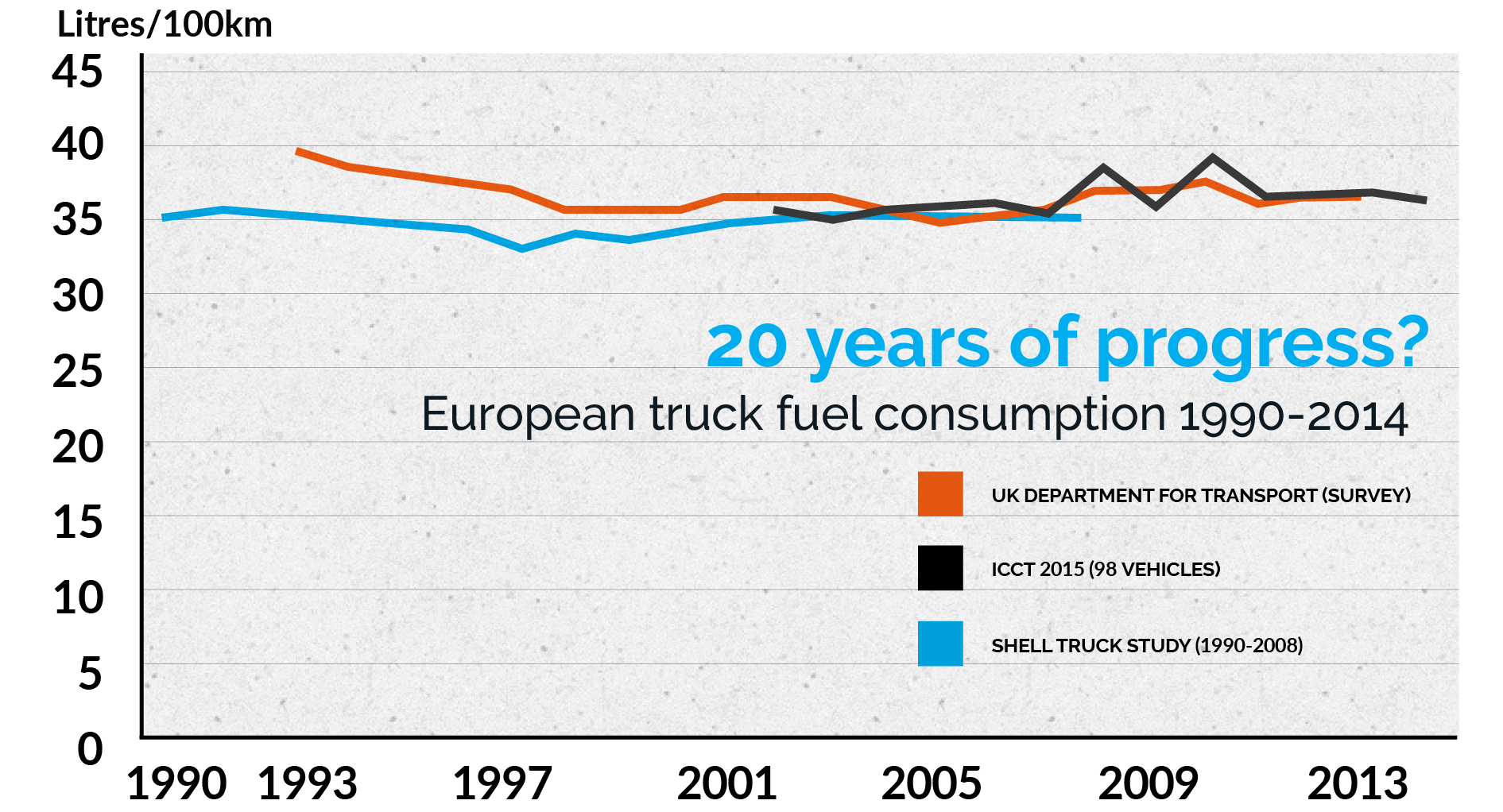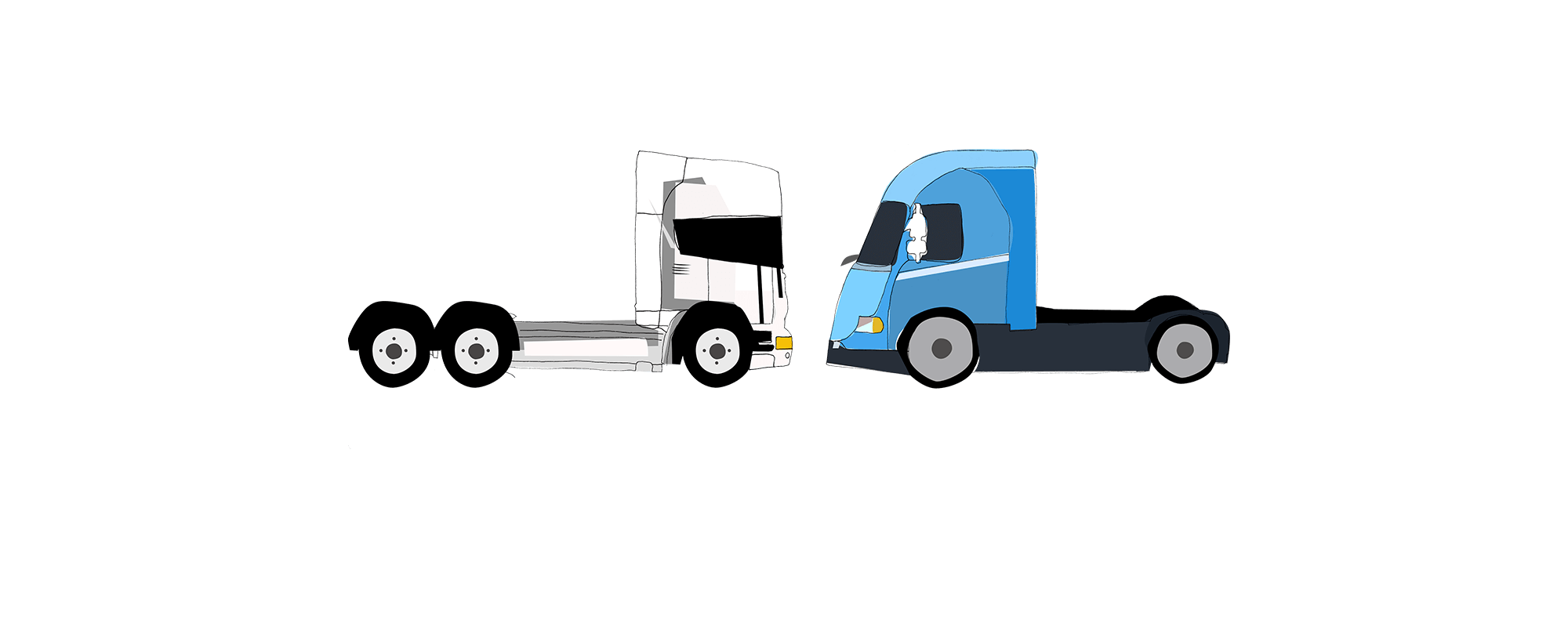Shifting gears: from truck designs to standards
As one campaign closes another has already begun. Early in 2015 the European Parliament and national governments finally voted to end brick-shaped lorries, clearing the way for advances in fuel efficiency and safety for drivers, cyclists and pedestrians. After round-upon-round of technical studies commissioned and policy discussions hosted by T&E, the new law was passed to allow truckmakers to produce new designs. Again it fell to us to call out member states on their craven concession to an industry that – incredibly – lobbied them to postpone a voluntary transition towards rounder cabins for a decade. With a lot of help from cities, hauliers, trade unions and environmental groups, the postponement was brought back a couple of years, to ‘only’ 2021. We were eager to move on and demonstrate the sector’s climate impact as well as the enormous potential of fuel efficiency standards.

While trucks and buses make up less than 5% of Europe’s vehicles, they account for 30% of EU road transport CO2 emissions. Their fuel efficiency has stagnated for the last 20 years mainly because we don’t have policies to make trucks more efficient, like we have for cars (CO2 standards). So when governments toyed with the idea of covering road transport emissions under the emissions trading system, T&E moved quickly to expose this folly with a comprehensive analysis on the effectiveness of CO2 standards. Standards for trucks would deliver annual emission cuts of over 36 megatons per year in 2030. That’s roughly as much as a 2025 standard for cars and vans.
A wake up call from across the pond
If all that evidence were not enough, news from America helped put truck fuel efficiency higher on the political agenda: the Obama administration started building on its existing truck CO2 standards and set a new target to improve fuel efficiency by 24% by 2027. But T&E argued that the announcement also signified something else important for European manufacturers, whose trucks account for more than 40% of global production. It was a direct challenge to Europe’s technological and regulatory leadership: our projections showed US trucks would likely overtake Europe’s on fuel efficiency by the early 2020s, if not sooner. That would not only be bad news for the environment but for the economy and jobs too.
Support for standards
Some European governments are starting to wake up: a look at the fine print in a European Commission consultation revealed support from up to four governments for truck CO2 standards. MEPs echoed this demand in a plenary vote in June while Germany’s Federal Environment Agency also came out in favour. The news came as T&E projections, based on the Commission’s own reference scenario, showed trucks and buses would almost equal cars’ share of road transport emissions by 2030 if CO2 standards, as passenger vehicles faced, were not introduced for trucks too.
We also made sure policymakers were given the latest evidence on what is happening to the trucking market. The International Council on Clean Transportation uncovered how trucks sold in Europe burn the same amount of fuel per km now as they did 13 years ago. This lost decade of truck fuel economy largely coincided with the period when European truckmakers allegedly operated a cartel to agree price increases following new air pollution standards. The Commission’s investigation continues.
 “Met de stemming van dinsdag draaien we de pagina om wat betreft de veiligheid op de weg en de brandstof-efficiëntie van vrachtwagens. Maar de effecten zullen pas in 2022 merkbaar zijn. Bovendien is het nieuwe design van vrachtwagens vrijwillig, en niet verplicht.”
“Met de stemming van dinsdag draaien we de pagina om wat betreft de veiligheid op de weg en de brandstof-efficiëntie van vrachtwagens. Maar de effecten zullen pas in 2022 merkbaar zijn. Bovendien is het nieuwe design van vrachtwagens vrijwillig, en niet verplicht.”
– William Todts, freight and climate director
Het Nieuwsblad, 10 March 2015
We also started building coalitions with hauliers and truck fleet managers. We joined forces with them to demand more competition on truck fuel economy and give road users access to data on fuel efficiency that is emerging from VECTO, the new test procedure to measure European trucks’ CO2. That and real-world testing of truck CO2 emissions would give hauliers a better basis for deciding what vehicle to buy.
The year also saw progress on truck tolling: Transport Commissioner Violeta Bulc announced plans for road charging that would be distance based, not time-dependent, and optional for member states (to make it politically feasible). T&E has been highlighting how smart road tolling can help drive better, safer and cleaner trucks into the fleet as well as bring a modal shift to rail. Meanwhile, yet another EU country prepared to introduce truck tolls with Belgium pushing ahead on its nation-wide truck tolling scheme.
Learn more
http://www.transportenvironment.org/what-we-do/cleaner-safer-lorries






